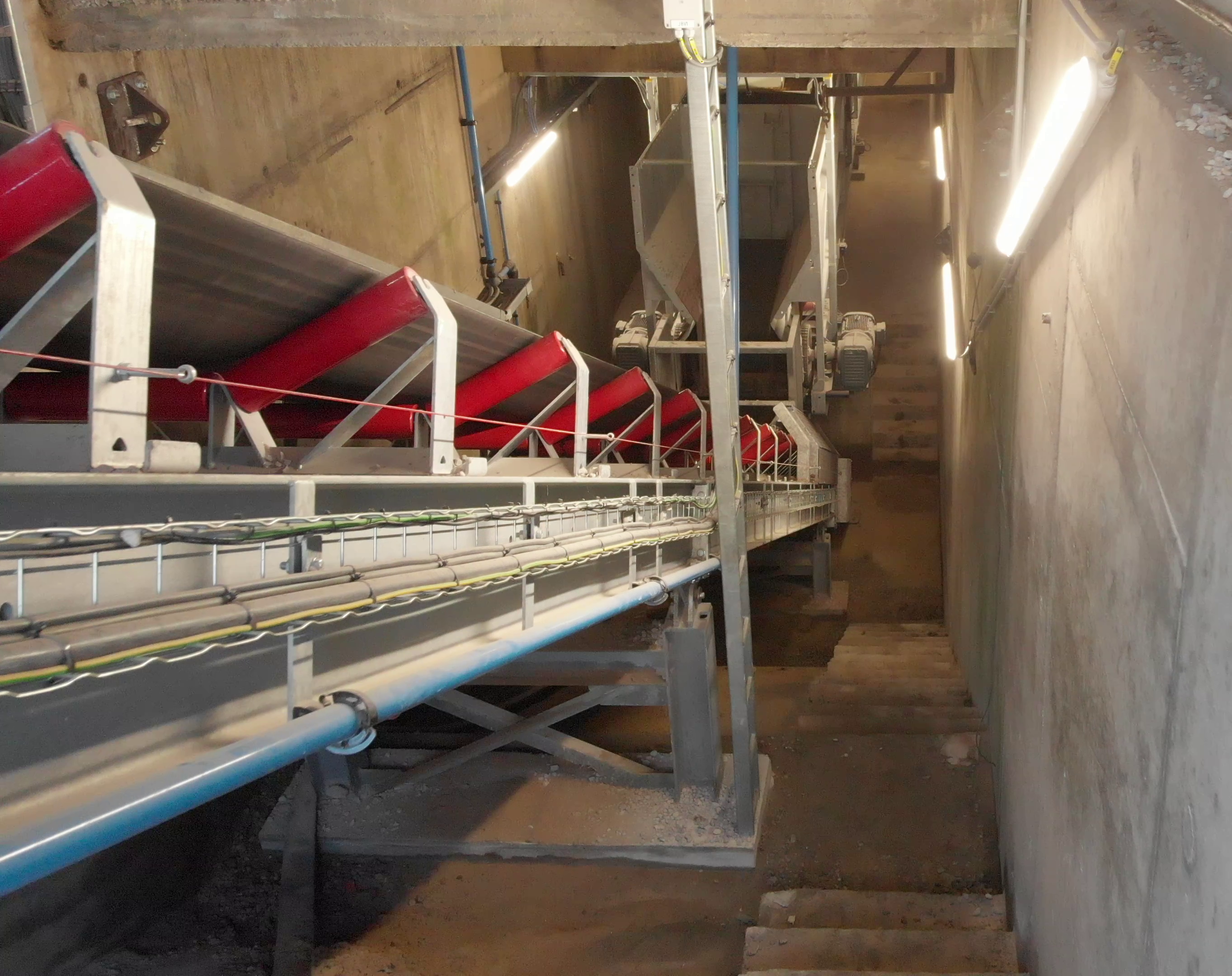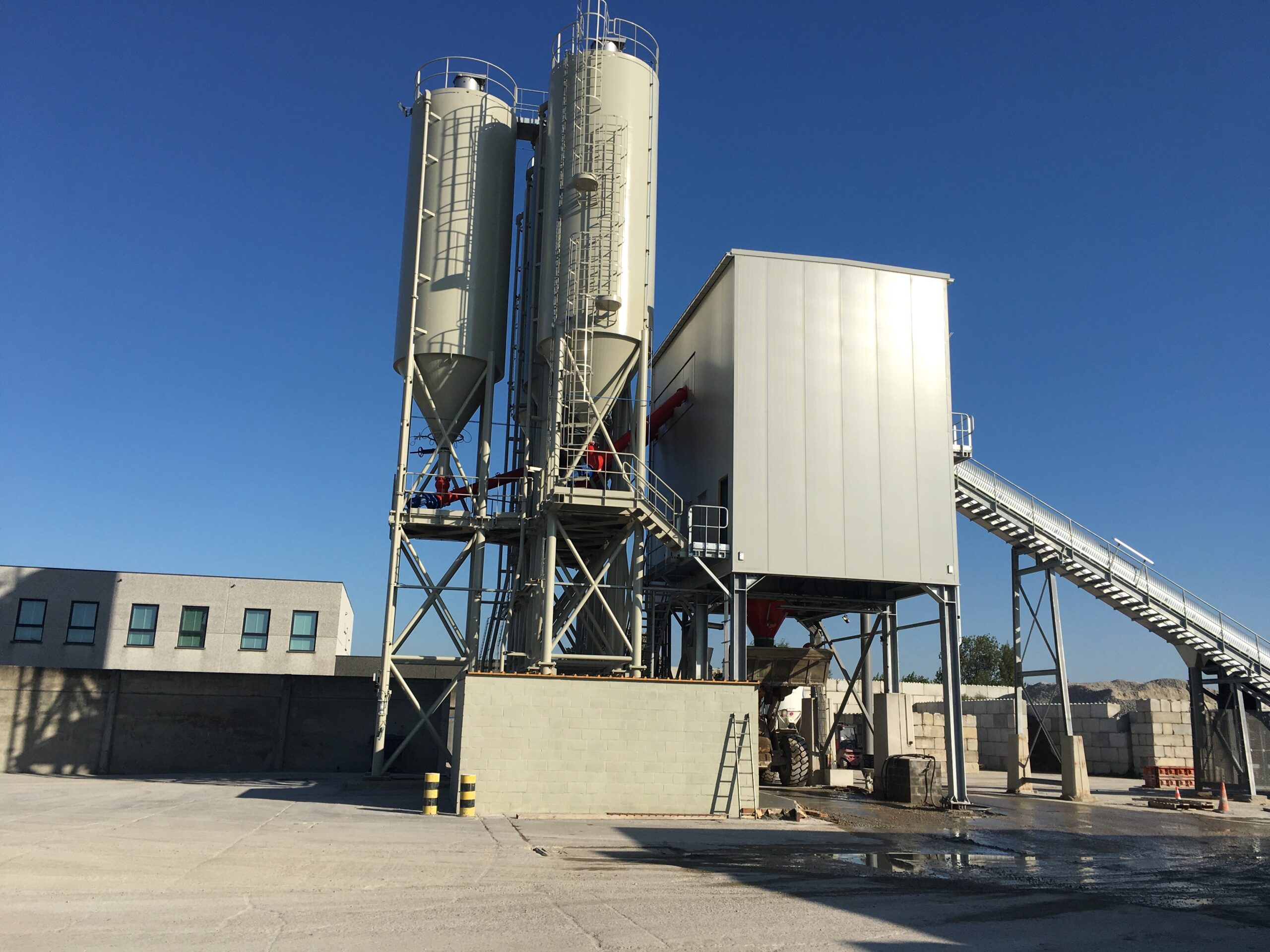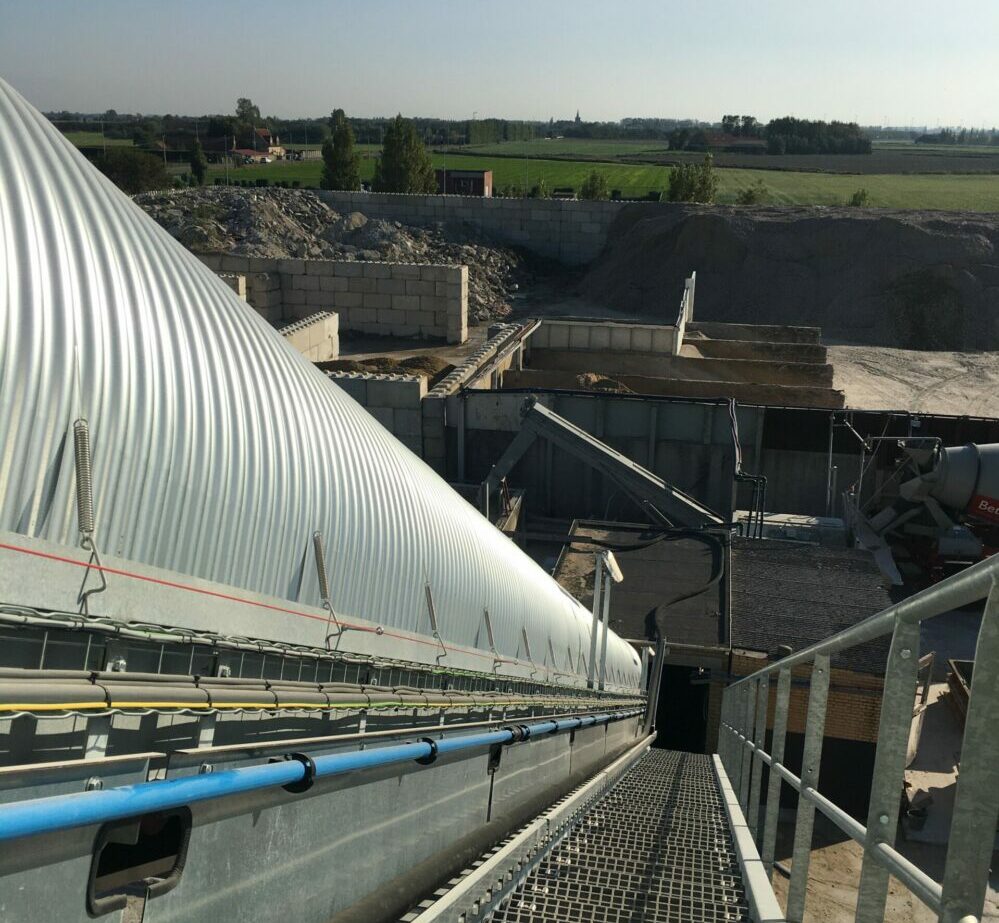In 1979, Blomme called on Lybover BULK (then Motogroup) for the first time to build a concrete plant. 10 years later, the family business knocked on the door of Motogroup again for a second plant. And now, a good 30 years later, Lybover BULK again received the trust of this established value. Thanks to well thought-out preparations and meticulous project management, the production standstill could be limited to six weeks.
In-house production of all essential components
The project included several major components: funnels under the aggregate storage, underground dosing and weighing unit, infeed conveyor, mixing tower and finally several cement silos. All essential components were built by the in-house production workshop in Bruges and Waregem. When purchasing components, we only chose high-quality suppliers.

New plant on existing foundation
The new concrete plant was built on the existing foundations. After the demolition of the old plant, the construction of the new one started. Due to time constraints, the mixing tower was already erected 50 metres away on the site and fully equipped with all the necessary facilities such as electricity, compressed air, water supply, waiting bunker, the mixer itself and cement, water and additive weighers. A crane placed the tower in place in two smooth movements. The very limited space in the basement was not a problem in this project. Thanks to the technology of 3D scanning, our Scan Engineer brought everything perfectly into view and visualised the desired situation in advance.

Optimisations for more efficient operation
In consultation with the customer, Lybover BULK implemented a few more optimisations compared to the previous weigher. To make it easier to get recup materials onto the weighing belt, we added four extraction belts, for example. The number of silos was maintained, but the plant received a mixer of four instead of three m³. We also adapted the weighing belt. Covers over the feed conveyor limit disturbance to the surroundings and prevent dust from spreading further. Finally, the plant was equipped with a waiting bunker, which means a considerable capacity gain for the customer. While the first mixture is mixing, the next one is already ready.
